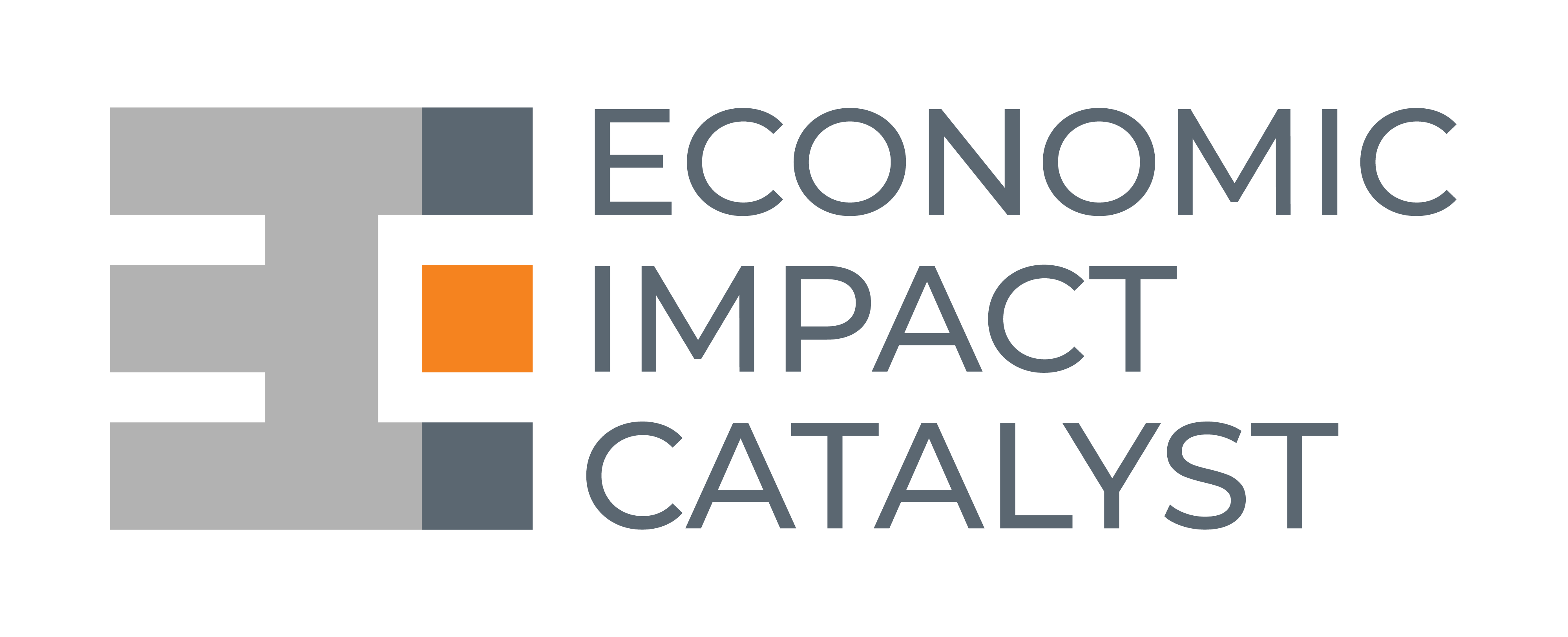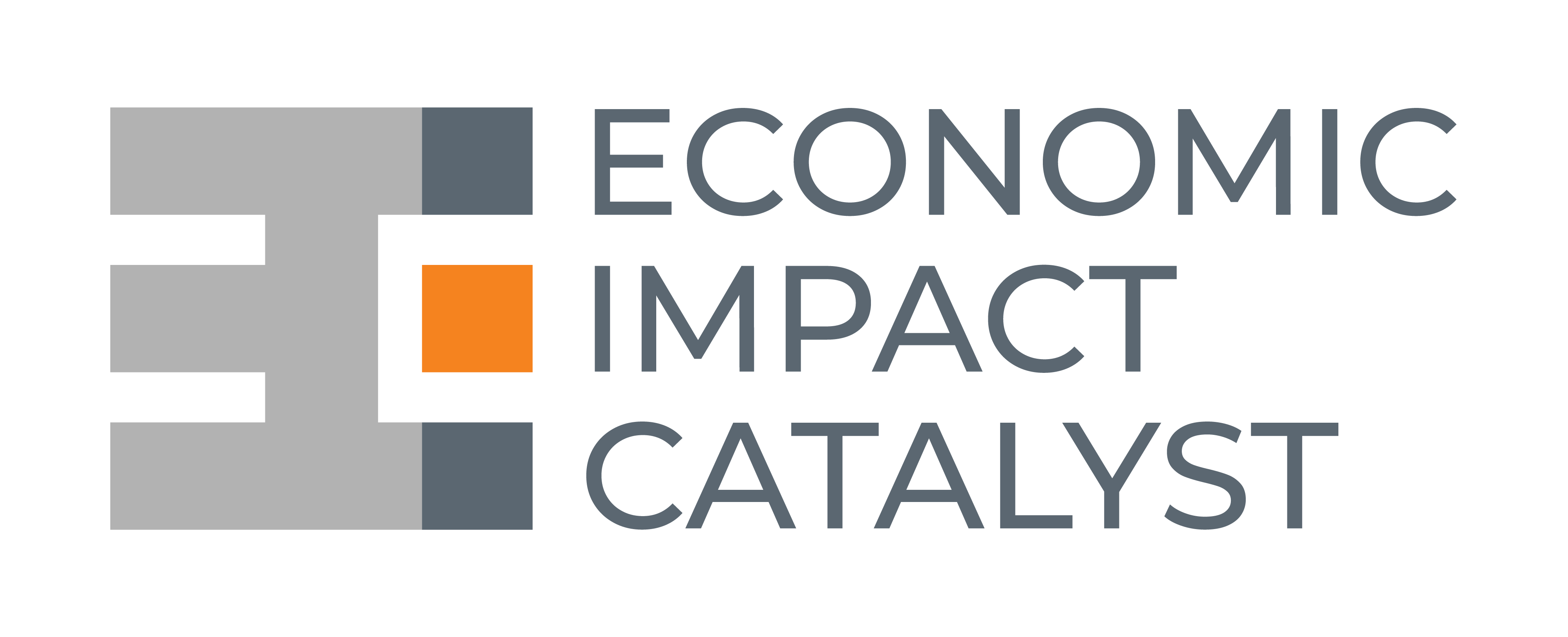Communities around the country are refocusing efforts on developing and supporting entrepreneurship. One of the first steps many take is defining what their unique community’s entrepreneurial ecosystem looks like. The entrepreneurial ecosystem is loosely defined as a community of entrepreneurs and the organizations, institutions, and other actors who are engaged with one another with the goal to support and grow successful entrepreneurs and increase the entrepreneurial output of a community. Defining these players helps set the stage for an understanding of what a community has and does not have when it relates to successfully supporting the entrepreneurial journey. So more often than not, an effort begins to map the ecosystem as a way to better see existing resources, identify gaps, and reduce duplicative efforts.
The overall goal of an entrepreneurial ecosystem map is to name stakeholders plotted as points of interest: startups, investors, accelerators, incubators, and support organizations. While this methodology provides a helpful overview, it can also be limiting. A map is static, two-dimensional, and doesn’t capture the dynamic interplay between these actors. And this interplay is often where the secret sauce of a vibrant ecosystem is found. While the mapping process helps satisfy the effort to increase visibility and better market a community’s support network, it is not the complete answer.
Moving Beyond the Map
To truly understand and support entrepreneurial growth, we need to move beyond the map and think of the ecosystem as a living and breathing entity. To reflect this dynamic, continual evolution requires us to take mapping to the next level. It is not just what is on the map, it is what it represents. Like an umbrella, each with a critical section for the overall success of the device, there are four primary components that must be considered:
Interconnectivity
Every element of the ecosystem is interconnected and interdependent. Simply put, everything touches everything. The success of one startup can have ripple effects throughout the system, benefiting other startups, investors, and support organizations. Similarly, understanding why failure is occurring is an equally important litmus on the ecosystem. Ideally, all pieces and parts of the ecosystem interplay with one another in some manner or another.
Coevolution
An ecosystem that stays stagnant suffers and eventually will fail. Embracing evolution is essential, and that cannot be done in a silo. New players emerge, technologies advance, market needs shift, unforeseen impacts occur – everything is always changing. Likewise, the ecosystem must embrace its constant statue of evolution. Successful participants will be those who can adapt and co-evolve not just for their own social and economic success, but for that of the whole of the system.
Emergence
The complex interactions within the ecosystem can lead to the emergence of new and unforeseen opportunities. It also allows for a reduction in competition for limited resources provided by those working to assist startups. The funding those organizations need and seek allows a nimbleness in jumping to emerging trends that benefit creativity and solution-finding. By fostering a culture of collaboration and experimentation, we can create the conditions for these opportunities to flourish.
Representation
Ensuring the ecosystem is representative of not just the players within it, but the community as a whole that it seeks to serve is of critical importance. Further, it allows for open conversations about unmet needs and areas to expand opportunity from all perspectives of both the service providers and the entrepreneurs themselves.
Reimagining the Role of Ecosystem Players
With this shift in perspective, we can also re-examine the role of all the players within the ecosystem. The map allows for the identification and common language surrounding what each community’s assets are within the ecosystem. Moving beyond the map alone is where the sweet spot lies and what sets communities apart. Step one is acknowledgement, step two is to facilitate and foster open and honest dialogue about what’s working, what’s not and what’s duplicative, and step three is to commit to iteration – reimagine and evolve.
Here are a few examples:
Startups:
Funding is the lifeline for most if not all startups. However, startups need to move beyond simply seeking funding and support and fully embrace their unique role in offering real-time perspectives. Actively engage with other startups and actors within the system sharing their knowledge and expertise, and contribute to the overall growth of the system.
Investors:
Investors should look beyond short-term returns and focus on supporting the long-term health of the ecosystem. This can function in many different ways, including the investment in early-stage ventures, providing patient capital, and supporting capacity building initiatives. Moreover, group investment and angel investment can provide targeted and smaller risk investment. Investment education in knowing what assets exist and what startup activity is occurring can help aid in bringing new investors to the table. All of these combined provide momentum for the community as a whole to gain traction as a place worthy of investment.
Accelerators and Incubators:
Accelerators and incubators serve as a critical piece to the puzzle, but they must begin to move beyond providing co-working spaces and mentorship. They should act as conveners and connectors, bringing together different players in the ecosystem and fostering increased collaboration, especially when it comes to potential investors. They should also be cautious about duplication and repetition.
Support Organizations:
Support organizations should focus on providing resources and programs that address the specific needs of the ecosystem, especially with those not being met by other actors and entities. This could include talent development programs, market access initiatives, community reporting, and policy advocacy.
Policy Leaders and Political Leadership:
Simply put, more leaders need to follow words with meaningful action. Just about everyone is for increasing entrepreneurial activity in their communities. The leaders that can take that support to the next level through investment and support of creative ways to actually influence and impact entrepreneurial measures will set themselves apart from the rest. We cannot see progress if the same types of actions and programs are supported without change.
Educational Institutions:
Educational institutions should continue to boldly step into training entrepreneurs and those with skills that entrepreneurs need to succeed. Talent development with connections to workforce opportunities elevates investment in the community as a whole. However, universities should be wary of duplicating efforts already found within the community through other actors and rather spend their time and talent fulfilling critical talent pipeline needs and crafting partnerships with startups and targeted industry clusters.
Building a Thriving Ecosystem
By moving beyond the map and seeing the system as an umbrella – interconnected and working together to function as one greater tool – we can foster a collaborative and more holistic understanding of the entrepreneurial ecosystems. This shift contributes to a more dynamic scene overall. The benefits are not just for individual startups, but the system, and therefore the community, as a whole. When startup activity is thriving and opportunity creation is expanding, the overall economic and social well-being of our communities benefit.
About EIC
At Economic Impact Catalyst, our mission is to activate a world where there is equitable and inclusive access to entrepreneurship. We believe that entrepreneurship is the key to equitable and inclusive economic development. Our team’s main focus every day is to make it easier for founders to launch businesses in order to create wealth for themselves, for their teams, and for their communities. To learn more about our technology and market research solutions, built exclusively to catalyze entrepreneurship-led economic development efforts, book a call with us today.
Contributors
Kim Vogel, Chief Strategy and Marketing Officer for Economic Impact Catalyst and Jessica Eilerman, Founder of Forward Communities Consulting Group (FCCG). FCCG is a consulting group that assists communities, entrepreneurs, and policy leaders in moving forward to a new way of impactful economic, community, and policy development. Prior to starting FCCG, Jessica served the City of St. Petersburg for nearly nine years, leading a team of five working on all aspects of economic and business development. In addition to developing collaborative relationships, retention and expansion efforts, the team assisted small and independent businesses navigating city government and formulated policy aimed at helping businesses thrive.
Jessica and Kim worked together in a successful public-private partnership co-managing The Greenhouse, St. Petersburg’s entrepreneurship and business development center.


